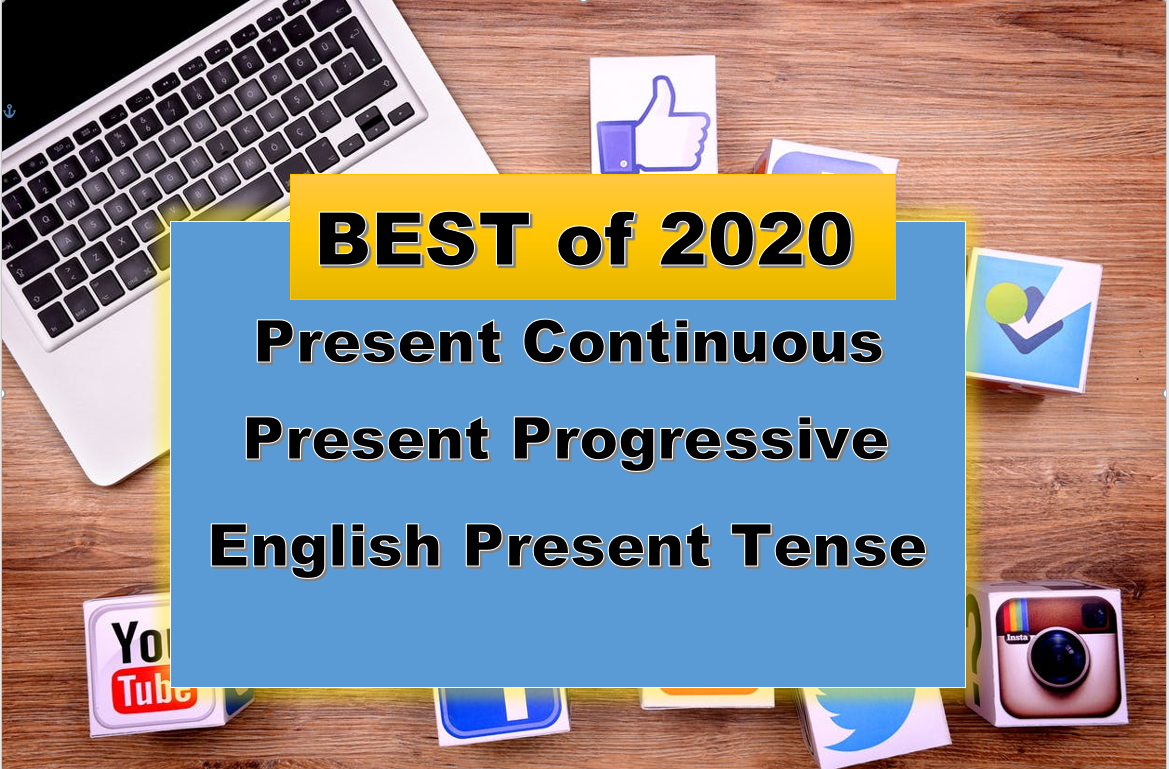Present Continuous Verb / Present Progressive Verb / English Present Tense
In this complete tutorial for beginners’ learners are going to learn Present Continuous Verb also called Present Progressive Verb / English Present Tense. The present continuous tense is used for actions happening now or for an action that is unfinished. This tense is also used when the action is temporary. We’ll start by looking at the form of the present continuous tense to see how it is spelt.
Watch the video here:
Verb to be + -ing form
I am sleeping
You are sleeping
He/she/it is sleeping
We are sleeping
They are sleeping
Present Continuous – Form
| Affirmative | Question | Negative |
| I am sleeping | Am I sleeping? | I am not sleeping |
| You are sleeping | Are you sleeping? | You are not sleeping |
| He/she/it is sleeping | Is he/ she/ it sleeping? | He/she/it is not sleeping |
| We are sleeping | Are we sleeping? | We are not sleeping |
| They are sleeping | Are they sleeping? | They are not sleeping |
Present Continuous – Uses
A. The main use is to is to describe temporary actions or some sort of actions which is in progress, it’s not completed, it’s happening now.
Examples:
1. What are you doing?
I am reading a book. /
I read a book. X
In this example we can’t say “I read a book” because it is an example of a present simple tense, but here we are being asked somebody is asking what are we doing now, so we use the present continuous tense
“I am reading a book” so verb to be + –ing form of the verb “reading”.
2. “Why are you angry?”- in this example something is happening now, there’s an observation, I have observed that somebody looks angry, so its happening now “Why are you angry?”, so we use the present continuous tense, it’s in progress and it’s temporary, the person isn’t angry all the time, but now he’s angry. It would be wrong to say “Why do you cry?” because that’s in the present simple.
3. They are playing football now. In this example “They” is the subject “are” is the present tense of the verb to be and “playing” is the present participle verb.
B. The second main use of the present continuous is to describe something which is evolving all the time even if it’s over a long period of time and something that expresses progressive change.
Let’s look at some examples:
1. I am studying to become a lawyer.
2. The climate is getting warmer.
3.The price of petroleum gas is increasing.
C. You can also use the present continuous to describe the future in terms of future plans and arrangements or if you are planning something in the future.
Examples:
1. “What are you doing tonight?” we do not say “What do you do tonight?”
2. He is visiting his grandparents next week.
3. What bar are we going to for drinks tonight?
D. You can also use the present continuous for expressing physical feelings, for example we can ask somebody:
1. How are you feeling?
How do you feel?
2. My knee is hurting.
My knee hurts.
3. My stomach is aching.
My stomach aches.
This is quite an exception because both sentences are correct.
This particular use is describing physical feelings, you can use both the present continuous and the present simple, both present tenses are correct. The meaning is exactly the same. So, for physical feelings, physical pain, feelings or sensation, you can use either the present continuous or the present simple.
Exercise 1
Complete the sentences. Use the present continuous form of the verb in brackets.
1. You____________ (use) my mobile phone!
2. My dad____________ (wash) his car.
3. It____________ (rain) today.
4. We ____________ (sit) on the train.
5. The students ____________ (have) lunch in the canteen.
Exercise 2
Change the sentences into the negative present continuous form of the verb
1. You are using my mobile phone!
2. My dad is washing his car.
3. It is raining today.
4. We are sitting on the train.
5. The students are having lunch in the canteen.
Exercise 3
Change the sentences into the question form of the present continuous of the verb.
1. You are using my mobile phone!
2. My dad is washing his car.
3. It is raining today.
4. We are sitting on the train.
5. The students are having lunch in the canteen.
Answer: Exercise 1
1. You are using my mobile phone!
2. My dad is washing his car.
3. It is raining today.
4. We are sitting on the train.
5. The students are having lunch in the canteen.
Answer: Exercise 2
1. You are not using my mobile phone!
2. My dad is not washing his car.
3. It is not raining today.
4. We are not sitting on the train.
5. The students are not having lunch in the canteen.
Answer: Exercise 3
1. Are you using my mobile phone?
2. Is your dad washing his car?
3. Is it raining today?
4. Are you sitting on the train?
5. Are the students having lunch in the canteen?
Downloadable Material
Here’s the downloadable material of Tutorial on Present Continuous verb and Present Progressive Verb in English here.
For more readings
- Quiet or quite / Confusing English words
- Expressing PREFERENCES: English Lesson
- Comparing Things with “AS” / English Grammar
- Comparative Adjectives – English Grammar Lesson
- Adjectives in English Grammar – Position in a Sentence
If you have any questions or suggestions about Present Continuous verb and Present Progressive Verb in English present tense, please feel free to leave a comment below or send us a message using our contact page.


